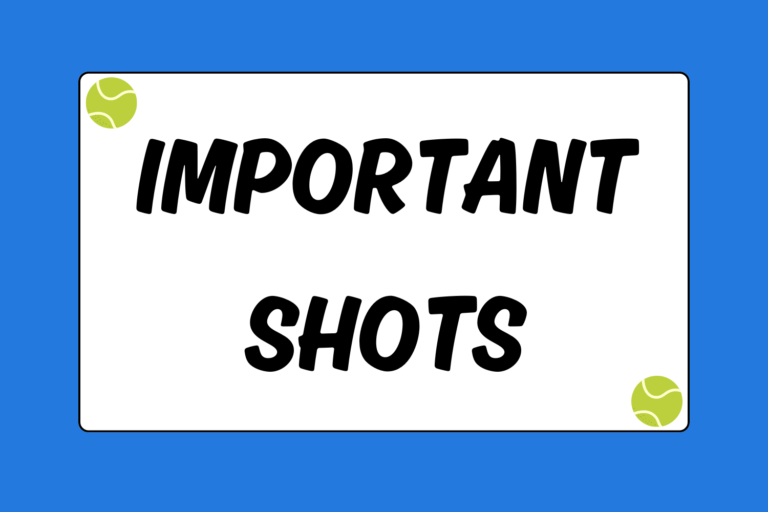When you watch tennis on television, you’re most likely going to see two professional players grinding out an intense singles match. However, the majority of recreational competitors play doubles, which involves entirely different shot selections and strategies than singles. Many great singles players have difficulty transitioning to doubles and struggle with the basics, like court positioning and shot placement.
Before you start slapping the ball around the court, it’s important to know some basic tactics and tips that will make you and your partner a feared team.
Own the Net
The ultimate goal for any doubles team, whether they are beginners or professionals, is to get to the net. The team that owns the net, volleys aggressively, and dictates the points has the best chance to leave victorious.
You want to avoid hanging around the baseline. The further back you stand, the closer your opponents will move in, and you’ll rely on lobbing the ball and hitting passing shots — not an easy way to win a game. The ball has a lot more court to cover and is easier to pick up coming from the baseline, giving the opponents additional time to take the ball out of the air and close out the point. While many singles players rely on a baseline game, don’t expect to win many doubles matches with groundstrokes.
You and your partner can return shots like a brick wall if you play aggressively at the net and volley consistently. Force your opponents into difficult shots, like trying to hit down the alleys or over your heads. Even if they hit a few winners, they’re going to have to earn them with extremely high-quality shots.
Now that you know where you want to play, here are a few pointers on how and when to get the net.
Keep the Ball Deep
Hitting the ball deep limits your opponents’ options and forces them into hitting tough shots. Deep shots are hard to control and put your opponents on the defensive, making it a perfect opportunity to charge the net.
Shots that land around the middle of the court are easy to aim. You can get your feet planted beneath you and strike the ball with accuracy and pace. Deep shots, on the other hand, pin your opponent behind the baseline and give you extra time to move to the net.
If your opponent hits a ball that lands short, try to push them off the court by hitting it deep and out wide. An approach shot should be a difficult shot for your opponent to recover from or return. Your opponents will feel the pressure of you trying to close at the net, and it will undoubtedly break their rhythm.
Serving
Serving provides the team with a great opportunity to control the point. Since your partner is already at the net, your goal as the server is to set your partner up with an opportunity to close out the point. With a well placed or struck serve, the server can crash the net and try to finish the point quickly.
Because there is less court to worry about covering in doubles, most doubles players serve while standing out wide.
A serve down the “T” can be very effective. If the returner has to stretch out to reach the serve, they likely aren’t going to hit the ball with much force or accuracy, and either player should take advantage of a mistake.
A slice serve out wide will force your opponent off the court and into a poor offensive position. The net player’s eyes should light up at this moment, and watch the ball off the opponents’ strings to close out the point as soon as possible.
Another effective serve, albeit a slightly more difficult one, is to jam your opponent by serving at the body. Hitting a tennis ball is extremely difficult if you can’t extend your arms, and the result is normally a poorly struck ball that the net player can finish.
A well-struck serve paves the road for the server to crash the net. However, if your opponent is able to return the serve somewhat easily, stay at the baseline. You do not want to be caught in No Man’s Land with the ball landing around your feet. A good approach shot should set up an easy finish.
Use Angles

Don’t leave balls sitting in the middle of the court where both players have a chance to return it. Make the other team move their feet and scramble to get the ball over the net.Once your opponent is on the defensive, they will most likely leave you with an opportunity to close the point out at the net.
Positioning
Knowing how to position yourself in doubles is extremely crucial, especially at the net. Not only should you pay attention to where your opponents are on the court, but you should always be aware of your partner’s whereabouts.
You and your partner can position yourselves in a few different manners:
- Both up at the net
- Both back at the baseline
- One up and one back
There is no fool-proof system; you have to be willing to make adjustments and experiment at any given moment. Ideally, you want to keep the ball deep, push both of your opponents back, and finish at the net with your partner.
You should position yourself according to where the ball lands. If you punch a volley towards the opposite deuce court (left, from your perspective), then you and your partner should sidestep to the left. It’s hard to hit a crosscourt winner past both players, so protecting the line and middle of the court is a priority in that situation. If one of the players forgets to adjust or is slow to move, it leaves a huge gap in the court. Make sure you and your partner are working and moving in unison.
Hot Tip: Switching Sides
Before your match begins, you and your partner should assess each other’s style of play to determine who plays in the deuce and ad courts. Choose sides that will play to your strengths and help hide your weaknesses. Remember, once a match begins you can only switch sides after a set ends or during a match tie break.
Avoid the Net Player
It’s much easier to close a point out from the net, so don’t make the opposing net player’s job easy by lobbing balls at him. If you can, avoid hitting to the opposing net player and keep the ball deep for the baseline player. If you leave a ball hanging in the air, the net player has a chance to cut it off and finish the point.
If you want to hit at the net player, force him into difficult shots. Hit at the feet or body, or make your opponent stretch out so he can’t return the ball with ease.
Be Vocal
A good doubles team talks all the time, during and between points. If a ball lands in the middle of the court where both players can return it, call your partner off by yelling “mine,” or make sure you partner knows he should take the shot by saying “yours.” You do not want to lose valuable points because of confusion or hesitation.
If you notice a weakness on the other team, recognize their strategy, or realize your teammate needs to make an adjustment, tell your partner right away. You should be constantly searching for a hole in your opponents’ game that you can exploit. Communication is the most valuable way for you and your partner to play in unison, so make sure you are openly discussing what’s going on at all times.
Have Fun
Doubles tennis is a great exercise and fun pastime. You and your teammate should enjoy the time on the court and not stress out. If you keep these pieces of information in mind and play a relaxed game, you should see improvements in your game immediately.





